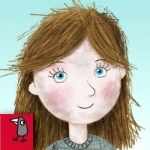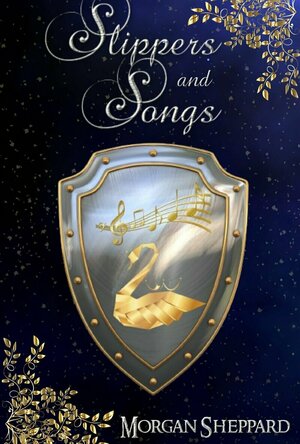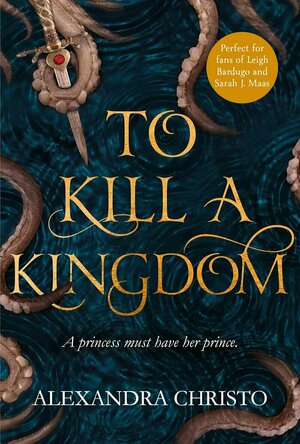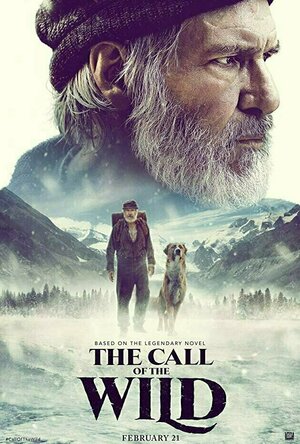Search
Joelene Marie (28 KP) rated The Fifth Doll in Books
Oct 1, 2018
*3.5 stars, rounded up to 4*
I originally requested this after coming across it on Netgalley during a random browse thru the sci-fi/fantasy category. The description sounded interesting so I thought I'd give it a shot. It sat on my Kindle carousel for a good while (so many books, so little time…) so it was a few days after it was released before I actually got around to starting it. I had seen The Fifth Doll mentioned in several posts and compared to Naomi Novik's Uprooted and Catherynne Valente's Deathless, two books that I love dearly. I decided to go back and check the Goodreads reviews to get an idea of the accuracy of that comparison and from there decided to read the first chapter or two to see if it hooked me like those two had. I was about 40% thru before I realized that it absolutely did have that “unputdownable” quality like the others and had to force myself to put it down and go to bed lol. After finishing it, I can say with certainty that the comparisons do indeed fit.
I have a weak spot for anything 'fairytale-esque’ and this definitely falls into that category, as it is a retelling of the origin of Russian matryoshka dolls. The mc’s name, Matrona, is a nod to this as well. This story is very well written and so imaginative. It definitely kept me guessing until close to the end when the truth about Slava, the creator of the dolls, is revealed. I liked that the Japanese nesting doll is where Slava found the inspiration to create his dolls, it's a small detail but one that ties this retelling to the real history of the matryoshka dolls.
I thought Matrona was developed pretty well but others, especially Slava, could have used a little more fleshing out. I would have also liked a little more backstory on Pavel and Oleg and the symbolism of the white horse. The writing style was solid and the pacing was just right in my opinion. The romance was subtle and didn't overshadow the main plot, which was nice for a change. The main thing I wasn't really happy with was the magic system. There's very little explanation of any of it or how it really works, only that it does. As a fan of fantasy and fairytales, I appreciate a well developed magic system as part of solid world building and that was sorely lacking here for me. Overall, it was an enjoyable read but I feel there was potential for it to be more.
**Thanks to Netgalley and the publisher for the ARC! All opinions are my own.**
I originally requested this after coming across it on Netgalley during a random browse thru the sci-fi/fantasy category. The description sounded interesting so I thought I'd give it a shot. It sat on my Kindle carousel for a good while (so many books, so little time…) so it was a few days after it was released before I actually got around to starting it. I had seen The Fifth Doll mentioned in several posts and compared to Naomi Novik's Uprooted and Catherynne Valente's Deathless, two books that I love dearly. I decided to go back and check the Goodreads reviews to get an idea of the accuracy of that comparison and from there decided to read the first chapter or two to see if it hooked me like those two had. I was about 40% thru before I realized that it absolutely did have that “unputdownable” quality like the others and had to force myself to put it down and go to bed lol. After finishing it, I can say with certainty that the comparisons do indeed fit.
I have a weak spot for anything 'fairytale-esque’ and this definitely falls into that category, as it is a retelling of the origin of Russian matryoshka dolls. The mc’s name, Matrona, is a nod to this as well. This story is very well written and so imaginative. It definitely kept me guessing until close to the end when the truth about Slava, the creator of the dolls, is revealed. I liked that the Japanese nesting doll is where Slava found the inspiration to create his dolls, it's a small detail but one that ties this retelling to the real history of the matryoshka dolls.
I thought Matrona was developed pretty well but others, especially Slava, could have used a little more fleshing out. I would have also liked a little more backstory on Pavel and Oleg and the symbolism of the white horse. The writing style was solid and the pacing was just right in my opinion. The romance was subtle and didn't overshadow the main plot, which was nice for a change. The main thing I wasn't really happy with was the magic system. There's very little explanation of any of it or how it really works, only that it does. As a fan of fantasy and fairytales, I appreciate a well developed magic system as part of solid world building and that was sorely lacking here for me. Overall, it was an enjoyable read but I feel there was potential for it to be more.
**Thanks to Netgalley and the publisher for the ARC! All opinions are my own.**

MyMinis - For LEGO® Minifigs
Shopping and Reference
App
MyMinis was last updated for Series 14 with 16 awesome minifigures! Use the Photo Touch Guide to...

Cinderella by Nosy Crow
Book and Education
App
*** Major new update! *** A brand new, trilingual edition of our award-winning Cinderella app, with...
Lottie disney bookworm (1056 KP) rated Of Thorns and Beauty in Books
Dec 29, 2020
Never has a retelling been so close but so unimaginabley far away from the original fairytale. Of Thorns and Beauty is a New Adult masterpiece which will reel you in from its first pages and not let you go until its cruel cliffhanger.
A quick note that this is definitely a New Adult novel. Although not written about in detail this take includes the subjects of abuse, murder and rape as well as a bucket load of sexual tension.
This retelling of Beauty and the Beast is written solely from the perspective of our protagonist-the beauty Zaina. Forced into an arranged marriage with the renowned beast King Einar and denied any companions to accompany her, Zaina enters the "Beast's" castle entirely on her guard and unaware as to what sort of a life lays before her.
It quickly becomes apparent that Zaina's beauty has only ever caused pain and hardship for her in the past. As a result of this, she is a far cry from the bookish village girl seeking an adventure in the great wide somewhere. Zaina is fiery, sarcastic, dangerous and her prickly, defensive demeanour makes her few friends in her new home.
The use of a first person perspective with a protagonist such as Zaina really brings this novel to life. Zaina is such a damaged character and the reader is drip fed memories so partially and so slowly that we still don't know the extent of her suffering once the book has ended.
The style of writing also allows us to share Zaina's frustration at attempting to read her husband Einar's emotions: quite ironic for someone so closed off herself. The reader does not always feel empathy though: Zaina's defences are so high that she shuns any attempt at friendship; sometimes you just want to shake her!
Elements of the original beauty and the beast tale remain: there is indeed a curse, a rose and a forbidden west wing. However, these are so cleverly twisted that the reader will finish this book with an entirely different concept of who the Beast really is.
The fact that the authors themselves apologise for the cliffhanger, explaining that the characters and storyline just required more pages and more time, shows the sheer commitment to world building and character development.
Madison and Mahle introduce us to a whole new world of scenery and creatures; they pull us into the painful past of both main characters; place slimy villains in the shadows and raise our hopes of romance before throwing them off a cliff. This book is impossible to put down and I cannot wait to see what happens next.
Thank you to Booksirens for the opportunity to read a free copy of this book in exchange for an honest review.
A quick note that this is definitely a New Adult novel. Although not written about in detail this take includes the subjects of abuse, murder and rape as well as a bucket load of sexual tension.
This retelling of Beauty and the Beast is written solely from the perspective of our protagonist-the beauty Zaina. Forced into an arranged marriage with the renowned beast King Einar and denied any companions to accompany her, Zaina enters the "Beast's" castle entirely on her guard and unaware as to what sort of a life lays before her.
It quickly becomes apparent that Zaina's beauty has only ever caused pain and hardship for her in the past. As a result of this, she is a far cry from the bookish village girl seeking an adventure in the great wide somewhere. Zaina is fiery, sarcastic, dangerous and her prickly, defensive demeanour makes her few friends in her new home.
The use of a first person perspective with a protagonist such as Zaina really brings this novel to life. Zaina is such a damaged character and the reader is drip fed memories so partially and so slowly that we still don't know the extent of her suffering once the book has ended.
The style of writing also allows us to share Zaina's frustration at attempting to read her husband Einar's emotions: quite ironic for someone so closed off herself. The reader does not always feel empathy though: Zaina's defences are so high that she shuns any attempt at friendship; sometimes you just want to shake her!
Elements of the original beauty and the beast tale remain: there is indeed a curse, a rose and a forbidden west wing. However, these are so cleverly twisted that the reader will finish this book with an entirely different concept of who the Beast really is.
The fact that the authors themselves apologise for the cliffhanger, explaining that the characters and storyline just required more pages and more time, shows the sheer commitment to world building and character development.
Madison and Mahle introduce us to a whole new world of scenery and creatures; they pull us into the painful past of both main characters; place slimy villains in the shadows and raise our hopes of romance before throwing them off a cliff. This book is impossible to put down and I cannot wait to see what happens next.
Thank you to Booksirens for the opportunity to read a free copy of this book in exchange for an honest review.
Debbiereadsbook (1579 KP) rated Slippers and Songs (Brodyr Alarch #1) in Books
Feb 23, 2024
There is romance here, but it takes time!
Independent reviewer for Archaeolibrarian, I was gifted my copy of this book.
Prince Brenin and his brother are summoned to help solve a mystery, to where Princess Tesni goes at night, and ruins her dancing shoes. She can't remember, and no one has been able to solve the riddle. Given that Brenin and his brothers survived a curse, they might be able to finally let Tesni sleep.
There is a book previous to this, but it's not really necessary to read Sealed with A Curse before this one. It would give you the story of how Brenin and his brothers were cursed, and why one brother still has a swan wing instead of an arm, but not really NEEDED to understand this one.
Brenin is called to help Tesni. (I was reading this as Tensi through the whole book though, so if I slip and type it wrong, I'm sorry!) They kinda clash a bit at first, but they do begin to get on once they start spending time together. There is romance here, but it takes time, and it's CLEAN. And I loved that it was! If you follow my reviews, you'll know I will always say I prefer my books on the spicier side, but here?? Nope, loved that it was clean and no violence.
I loved how I did not see who was responsible for Tesni's plight. Did not see that coming at all! Nor why! So well played there!
It's beautifully written. Full of Welsh myths and gods, and I can't remember their names but those same gods are central to Sealed With a Curse, so maybe you SHOULD read that one before this!
My only niggle, and it really is a niggle. I'm picky like that and it's my review but this won't affect my star rating! The book is told from only Brenin's point of view and I really wanted to know what Tesni was thinking, at key points along the way. When she meets Brenin, when she gets up at night, what was going through her mind, when Brenin solves the riddle, and when Brenin first asks that very important question! I loved her reaction, I kinda expected it, but I didn't expect Brenin to run away! He does come good, with a little help from previously aforementioned Welsh gods whose names I can't say let alone spell!
I'm intrigued by these fairytale retells. They are all Brothers Grimm, but ones I've never heard of! I'm looking forward to reading the next one.
I liked Sealed with a Curse, it was a nice read that I gave 4 stars to. But this one? I LOVED this one! And as such, it can only get:
5 full and shiny stars!
*same worded review will appear elsewhere
Prince Brenin and his brother are summoned to help solve a mystery, to where Princess Tesni goes at night, and ruins her dancing shoes. She can't remember, and no one has been able to solve the riddle. Given that Brenin and his brothers survived a curse, they might be able to finally let Tesni sleep.
There is a book previous to this, but it's not really necessary to read Sealed with A Curse before this one. It would give you the story of how Brenin and his brothers were cursed, and why one brother still has a swan wing instead of an arm, but not really NEEDED to understand this one.
Brenin is called to help Tesni. (I was reading this as Tensi through the whole book though, so if I slip and type it wrong, I'm sorry!) They kinda clash a bit at first, but they do begin to get on once they start spending time together. There is romance here, but it takes time, and it's CLEAN. And I loved that it was! If you follow my reviews, you'll know I will always say I prefer my books on the spicier side, but here?? Nope, loved that it was clean and no violence.
I loved how I did not see who was responsible for Tesni's plight. Did not see that coming at all! Nor why! So well played there!
It's beautifully written. Full of Welsh myths and gods, and I can't remember their names but those same gods are central to Sealed With a Curse, so maybe you SHOULD read that one before this!
My only niggle, and it really is a niggle. I'm picky like that and it's my review but this won't affect my star rating! The book is told from only Brenin's point of view and I really wanted to know what Tesni was thinking, at key points along the way. When she meets Brenin, when she gets up at night, what was going through her mind, when Brenin solves the riddle, and when Brenin first asks that very important question! I loved her reaction, I kinda expected it, but I didn't expect Brenin to run away! He does come good, with a little help from previously aforementioned Welsh gods whose names I can't say let alone spell!
I'm intrigued by these fairytale retells. They are all Brothers Grimm, but ones I've never heard of! I'm looking forward to reading the next one.
I liked Sealed with a Curse, it was a nice read that I gave 4 stars to. But this one? I LOVED this one! And as such, it can only get:
5 full and shiny stars!
*same worded review will appear elsewhere
Hazel (1853 KP) rated To Kill a Kingdom in Books
Apr 9, 2018
A princess must have her prince but perhaps not in the usual happy-ever-after fairytale way. With sirens, princes, pirates, mermaids and magic, To Kill a Kingdom by Alexandra Christo is a dark fantasy novel perfect for those who grew up with Peter Pan and The Little Mermaid. But, as with most traditional fairy tales, this book is riddled with trickery and lies, making it a heart-stopping adventure.
Lira is a siren princess who is nearing her eighteenth birthday. In order to celebrate the life of their goddess Keto and get revenge for her death at the hands of the humans, each siren must kill and remove the heart of a human victim. Lira has always targeted princes and aims to steal the heart of Prince Elian of Midasan, however, her mother, the sea queen, has different ideas.
As punishment for disobeying her orders, the evil queen temporarily turns Lira into a human, stripping her of her siren power. In order to return, she must kill Prince Elian and return to the sea with his heart. However, things get complicated when Prince Elian saves Lira from drowning and takes her aboard his ship.
Elian is a prince-cum-pirate who has no wish to be the heir of the golden kingdom of Midasan. He spends his days as the captain of his ship, hunting and killing sirens. Not realising Lira is the siren he most wishes to destroy, he gradually gets used to her presence and believes she will be useful to him on his quest to find a crystal that will destroy the sea queen forever. Lira agrees to help, however, she has an ulterior motive – perhaps she can help Elian find the crystal then kill him and destroy her mother …
It takes a while for this dark, romantic young adult novel to get going; there is a lot of introduction to characters and the way their fantasy world operates. With different customs to get familiar with, particularly in the case of the sirens, it is a little monotonous for the first few chapters. However, once Lira and Elian meet, events become far more interesting.
The banter and insults hurled between Elian, Lira and the rest of the crew is a humorous addition to the storyline and makes the prince and princesses growing relationship all the more exciting. With the sea queen lurking in the shadows, the story builds up to a fateful conclusion, however, maybe Lira can steal the prince’s heart a different way.
Once the story is well underway it becomes an engrossing piece of literature that is difficult to put down. With romance, danger and a cataclysmic ending, it has everything that a young adult fantasy fan wishes for. To Kill a Kingdom is Christo’s debut and it is exciting to find out what she will write next.
Lira is a siren princess who is nearing her eighteenth birthday. In order to celebrate the life of their goddess Keto and get revenge for her death at the hands of the humans, each siren must kill and remove the heart of a human victim. Lira has always targeted princes and aims to steal the heart of Prince Elian of Midasan, however, her mother, the sea queen, has different ideas.
As punishment for disobeying her orders, the evil queen temporarily turns Lira into a human, stripping her of her siren power. In order to return, she must kill Prince Elian and return to the sea with his heart. However, things get complicated when Prince Elian saves Lira from drowning and takes her aboard his ship.
Elian is a prince-cum-pirate who has no wish to be the heir of the golden kingdom of Midasan. He spends his days as the captain of his ship, hunting and killing sirens. Not realising Lira is the siren he most wishes to destroy, he gradually gets used to her presence and believes she will be useful to him on his quest to find a crystal that will destroy the sea queen forever. Lira agrees to help, however, she has an ulterior motive – perhaps she can help Elian find the crystal then kill him and destroy her mother …
It takes a while for this dark, romantic young adult novel to get going; there is a lot of introduction to characters and the way their fantasy world operates. With different customs to get familiar with, particularly in the case of the sirens, it is a little monotonous for the first few chapters. However, once Lira and Elian meet, events become far more interesting.
The banter and insults hurled between Elian, Lira and the rest of the crew is a humorous addition to the storyline and makes the prince and princesses growing relationship all the more exciting. With the sea queen lurking in the shadows, the story builds up to a fateful conclusion, however, maybe Lira can steal the prince’s heart a different way.
Once the story is well underway it becomes an engrossing piece of literature that is difficult to put down. With romance, danger and a cataclysmic ending, it has everything that a young adult fantasy fan wishes for. To Kill a Kingdom is Christo’s debut and it is exciting to find out what she will write next.
Hazel (1853 KP) rated To Kill a Kingdom in Books
Dec 7, 2018
<i>This ebook was provided by the publisher via NetGalley in exchange for an honest review </i>
A princess must have her prince but perhaps not in the usual happy-ever-after fairytale way. With sirens, princes, pirates, mermaids and magic, <i>To Kill a Kingdom</i> by Alexandra Christo is a dark fantasy novel perfect for those who grew up with <i>Peter Pan</i> and The Little Mermaid. But, as with most traditional fairy tales, this book is riddled with trickery and lies, making it a heart-stopping adventure.
Lira is a siren princess who is nearing her eighteenth birthday. In order to celebrate the life of their goddess Keto and get revenge for her death at the hands of the humans, each siren must kill and remove the heart of a human victim. Lira has always targeted princes and aims to steal the heart of Prince Elian of Midasan, however, her mother, the sea queen, has different ideas.
As punishment for disobeying her orders, the evil queen temporarily turns Lira into a human, stripping her of her siren power. In order to return, she must kill Prince Elian and return to the sea with his heart. However, things get complicated when Prince Elian saves Lira from drowning and takes her aboard his ship.
Elian is a prince-cum-pirate who has no wish to be the heir of the golden kingdom of Midasan. He spends his days as the captain of his ship, hunting and killing sirens. Not realising Lira is the siren he most wishes to destroy, he gradually gets used to her presence and believes she will be useful to him on his quest to find a crystal that will destroy the sea queen forever. Lira agrees to help, however, she has an ulterior motive – perhaps she can help Elian find the crystal then kill him and destroy her mother …
It takes a while for this dark, romantic young adult novel to get going; there is a lot of introduction to characters and the way their fantasy world operates. With different customs to get familiar with, particularly in the case of the sirens, it is a little monotonous for the first few chapters. However, once Lira and Elian meet, events become far more interesting.
The banter and insults hurled between Elian, Lira and the rest of the crew is a humorous addition to the storyline and makes the prince and princesses growing relationship all the more exciting. With the sea queen lurking in the shadows, the story builds up to a fateful conclusion, however, maybe Lira can steal the prince’s heart a different way.
Once the story is well underway it becomes an engrossing piece of literature that is difficult to put down. With romance, danger and a cataclysmic ending, it has everything that a young adult fantasy fan wishes for. To Kill a Kingdom is Christo’s debut and it is exciting to find out what she will write next.
A princess must have her prince but perhaps not in the usual happy-ever-after fairytale way. With sirens, princes, pirates, mermaids and magic, <i>To Kill a Kingdom</i> by Alexandra Christo is a dark fantasy novel perfect for those who grew up with <i>Peter Pan</i> and The Little Mermaid. But, as with most traditional fairy tales, this book is riddled with trickery and lies, making it a heart-stopping adventure.
Lira is a siren princess who is nearing her eighteenth birthday. In order to celebrate the life of their goddess Keto and get revenge for her death at the hands of the humans, each siren must kill and remove the heart of a human victim. Lira has always targeted princes and aims to steal the heart of Prince Elian of Midasan, however, her mother, the sea queen, has different ideas.
As punishment for disobeying her orders, the evil queen temporarily turns Lira into a human, stripping her of her siren power. In order to return, she must kill Prince Elian and return to the sea with his heart. However, things get complicated when Prince Elian saves Lira from drowning and takes her aboard his ship.
Elian is a prince-cum-pirate who has no wish to be the heir of the golden kingdom of Midasan. He spends his days as the captain of his ship, hunting and killing sirens. Not realising Lira is the siren he most wishes to destroy, he gradually gets used to her presence and believes she will be useful to him on his quest to find a crystal that will destroy the sea queen forever. Lira agrees to help, however, she has an ulterior motive – perhaps she can help Elian find the crystal then kill him and destroy her mother …
It takes a while for this dark, romantic young adult novel to get going; there is a lot of introduction to characters and the way their fantasy world operates. With different customs to get familiar with, particularly in the case of the sirens, it is a little monotonous for the first few chapters. However, once Lira and Elian meet, events become far more interesting.
The banter and insults hurled between Elian, Lira and the rest of the crew is a humorous addition to the storyline and makes the prince and princesses growing relationship all the more exciting. With the sea queen lurking in the shadows, the story builds up to a fateful conclusion, however, maybe Lira can steal the prince’s heart a different way.
Once the story is well underway it becomes an engrossing piece of literature that is difficult to put down. With romance, danger and a cataclysmic ending, it has everything that a young adult fantasy fan wishes for. To Kill a Kingdom is Christo’s debut and it is exciting to find out what she will write next.
Neon's Nerd Nexus (360 KP) rated The Call Of The Wild (2020) in Movies
Feb 22, 2020 (Updated Feb 23, 2020)
A Sheep In Wolf's Clothing
Call Of The Wild is such a lovely heartfelt movie that will leave everyone that goes to see it with that warm tingly feeling inside their chest and a nice big smile on thier face. Ive seen this film is getting a lot of hate because of its over reliance on cgi animals and while I will admit I found it very distracting to start with after 10 minutes I became accustom and think the movie is much better for using it. Why you ask? well the movie to me is obviously aimed at children and the over all feel of it to me was very much like a classic Disney animated cartoon. Let me explain, theres just something so lovely, peaceful and magical about the whole thing and the way its structured, how exaggerated the characters are, the world it builds and the story. See they all just all come together to give you those same feelings you had when you watched a fairytale like beauty and the beast for the first time. Having the dog be cgi lets him have more cartoonish/exaggerated animations and a way more expressive face really helps us to relate to him better, clearly see how hes feeling and to add to this constant sense of warmth/magic thats present throughout. Theres also a fantastic sense of adventure here and the film uses stunning locations to constantly wow us and keep us in this picturesque perfect dream or tranquil fantasy kind of state. Harrison ford is splendid here playing a lonely man whos almost given up hope of being truly happy until Buck comes along. His perfomance is so touching and you can clearly hear in his Blade Runner style narrations the sadness and pain in his heart which immediately helps you to feel sympathy towards him. Bucks story is equally as sad too, he longs to be part of a pack/family of his own and to one day become a leader answering to no one but himself. His motivations are shown in the form of a powerful and strong black wolf that keeps his confidence up and his determination strong and theres so many messages about never giving up, pushing forward and trusting in your destiny too that its hard not to become fully engrossed in his journey. It may be a simple tale but its an absolute joy to watch and its motivational themes are guaranteed to make anyone think positively about thier own life while watching. I also can not go without mentioning Dan Stevens, boy is this guy talented. His acting here is devilishly cartoonish, over the top wicked and had me grinning constantly in pure delight. Call Of The Wild is an all out beautiful, fun, adorable and exciting adventure for all the family to enjoy and I can not wait till it comes out to buy on 4k.

Uri: The Sprout of Lotus Creek
Games, Entertainment and Stickers
App
Published by Fantastic Games Introduction Designed by DreamTree Games (An indie games studio in...
Phillip McSween (751 KP) rated The Hate U Give (2018) in Movies
Feb 11, 2019
Masterpiece, One of the Best of 2018
After witnessing a murder, black high school student Starr Carter (Amandla Stenberg) decides to stand up against racism while dealing with her own internal conflict of self-identity.
Acting: 10
Beginning: 8
The toughest part about critiquing is having to say something isn’t perfect, but not really having any ideas as to how to fix it. The beginning was…good. Characters are introduced as you meet the Carter family for the first time. It definitely could have been better, however. I felt it dragged on for slightly too long, but at the same time I understand director George Tillman Jr. was going for an emotional connection. While it could’ve been better, it is solid enough of a start to get you into the movie.
Characters: 10
The film revolves around Starr and her family. Each family member contributes to the overall dynamic of the story. You can see how Starr is shaped by her strong father Maverick (Russell Hornsby) who is all about standing up for what’s right and protecting the family at all costs. Her mother Lisa (Regina Hall) just wants Starr to have a better life than herself growing up. Starr recognizes that and tries to embrace it, but also feels guilty while doing so. It was therapeutic watching Starr evolve into a woman after feeling so powerless in the earlygoings of the film. All of these characters, even those outside of the Carter family, have depth and add value to the story.
Cinematography/Visuals: 10
Conflict: 10
Genre: 8
Memorability: 10
The Hate U Give is packed with twists and turns that you don’t expect or see coming. It really is a small world that we live in, too small to go around hating each other. The film succeeds by showing us just how small this world is. There are a number of memorable scenes that remain etched in my brain long after watching the movie. It’s one of those films that stays with you, leaving you with cause for much thought.
Pace: 9
There were a few spots where the build-up was a bit slow, but it’s not a major issue that impacts the movie as a whole. This goes back to what I was mentioning in the beginning. Not perfect, but I’m not sure how much I would have done differently than Tillman Jr. For the most part, the movie is highly entertaining and has a consistent flow.
Plot: 10
Resolution: 10
Ended just the way it should, not with some fairytale conclusion, but reality. Thank God for justice, but the movie leaves us with the full understanding that there is still work yet to be done. Very strong messaging.
Overall: 95
The Hate U Give is not your typical race war movie as it pushes for peace in coexistence and challenges the ideas of self-identification. The dynamics involved here are truly interesting as you see a black vs. white vs. hood life going on and what happens when lines cross. With a solid cast and story, it is not a surprise that this is one of my favorite films of 2018.
Acting: 10
Beginning: 8
The toughest part about critiquing is having to say something isn’t perfect, but not really having any ideas as to how to fix it. The beginning was…good. Characters are introduced as you meet the Carter family for the first time. It definitely could have been better, however. I felt it dragged on for slightly too long, but at the same time I understand director George Tillman Jr. was going for an emotional connection. While it could’ve been better, it is solid enough of a start to get you into the movie.
Characters: 10
The film revolves around Starr and her family. Each family member contributes to the overall dynamic of the story. You can see how Starr is shaped by her strong father Maverick (Russell Hornsby) who is all about standing up for what’s right and protecting the family at all costs. Her mother Lisa (Regina Hall) just wants Starr to have a better life than herself growing up. Starr recognizes that and tries to embrace it, but also feels guilty while doing so. It was therapeutic watching Starr evolve into a woman after feeling so powerless in the earlygoings of the film. All of these characters, even those outside of the Carter family, have depth and add value to the story.
Cinematography/Visuals: 10
Conflict: 10
Genre: 8
Memorability: 10
The Hate U Give is packed with twists and turns that you don’t expect or see coming. It really is a small world that we live in, too small to go around hating each other. The film succeeds by showing us just how small this world is. There are a number of memorable scenes that remain etched in my brain long after watching the movie. It’s one of those films that stays with you, leaving you with cause for much thought.
Pace: 9
There were a few spots where the build-up was a bit slow, but it’s not a major issue that impacts the movie as a whole. This goes back to what I was mentioning in the beginning. Not perfect, but I’m not sure how much I would have done differently than Tillman Jr. For the most part, the movie is highly entertaining and has a consistent flow.
Plot: 10
Resolution: 10
Ended just the way it should, not with some fairytale conclusion, but reality. Thank God for justice, but the movie leaves us with the full understanding that there is still work yet to be done. Very strong messaging.
Overall: 95
The Hate U Give is not your typical race war movie as it pushes for peace in coexistence and challenges the ideas of self-identification. The dynamics involved here are truly interesting as you see a black vs. white vs. hood life going on and what happens when lines cross. With a solid cast and story, it is not a surprise that this is one of my favorite films of 2018.





